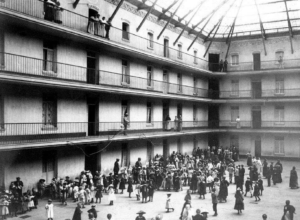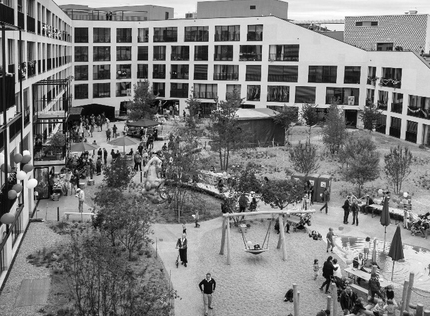What would non-sexist cities be like?
- Aparna Venkat

- Apr 28, 2021
- 3 min read
Dolores Hayden’s essay, examines how architectural design and urban planning in the United States have been instrumental in constraining women’s equal participation in physical, social, and economic life.
Hayden argues that the adage, “A woman’s place is in the home,” She reflects on how the design and structure of residential architecture are orchestrated around the “ideal nuclear family,” which views men as breadwinners, engaged in the workforce and public life of the city, and women as the symbol of domestic order, confined to the private life of the home and the needs of the family.
The time in which it was published, more and more women, compared to the previous dire states, were entering paid work. Hayden saw the design of the city – and the family home – as having potential for creating more equal relationships. And yet, despite this, the design of the modern city suggests urban planners may still be Promoting stereotypes of the patriarchal family.
What is the non-sexist city?
Hayden argued the built environment helped shape ideas of how a “normal family” should use space. She said advertisements of the time – such as those showing the importance of women’s attractiveness to a man with overt links to being good homemakers – reinforced women’s roles as consumers rather than producers of valued work. Separating areas for cooking and laundry from the main part of the house, as well as placing housing some distance from schools and children’s activities, locked women into laborious days of invisible house and care work.
Hayden reimagined the family home, and the city around it, as being accessible for women who were now doing a “double work day”. She pointed to designs that overturned assumptions that domestic must be separated from public space. She proposed communal housing developments, each comprised of 40 households, with shared laundry and kitchen facilities. But she also drew attention to restrictive zoning regulations that didn’t allow for such facilities in residential areas.
I believe most of what Hayden wrote in her text and while many of her arguments remain true today, society has changed a lot since then, offering new possibilities. For example the concept of doing home office was made possible by the internet, bringing work and home life closer together, which gives new possibilities to work even in the suburbs. The proposal that Hayden makes for a non-sexists city by describing HOMES is interesting in several ways. First of all she is very pragmatic in searching for a realistic solution and precise when considering the needs of the working woman.
In terms of architectural project that resonate with these thoughts and that come to mind are these so called, "Cooperative societies" in Zurich. So in Kalkbriete cooperative, many facilities are provided that resemble Hayden’s HOMES project.
For example, people can use the services of child care, get meals in a big kitchen/restaurant, share a laundry room or book a conference room directly in the house per hour, which makes it easy to combine family life and work.
Familistère Kalkbriete
Also the other project I read about was Familistère. So here the architect was trying to build a community for the workers and their families. Even though this example took place in another time, I believe we could still learn from it. Women and men were working. A nursery, an infant school and various little shops were part of the project. However, it remained an isolated experiment. One of the reasons, I feel could be that people found it hard to adapt to this kind of very public life and giving up the level of privacy they were used to.
While the Familistère and Kalkbreit each offer new and interesting solutions, it can be assumed that most people in society might not be willing to commit to such a life in a community. Since these attempts never resulted in a mass-movement, the reasons should be carefully evaluated and learned from.












Comments